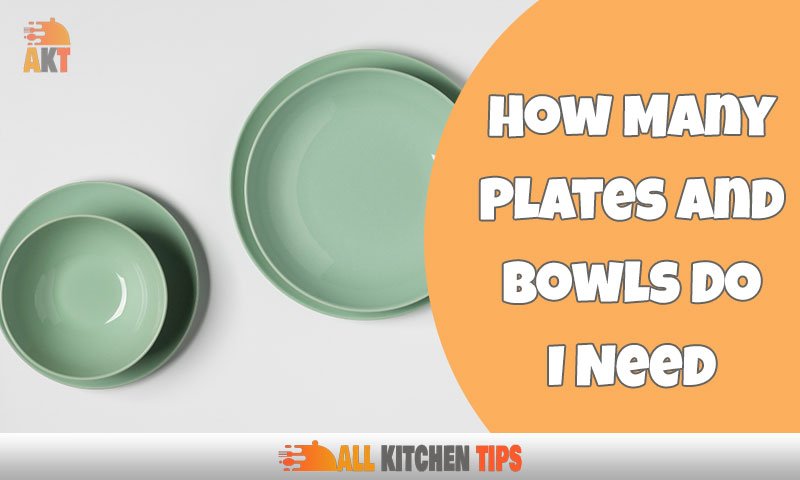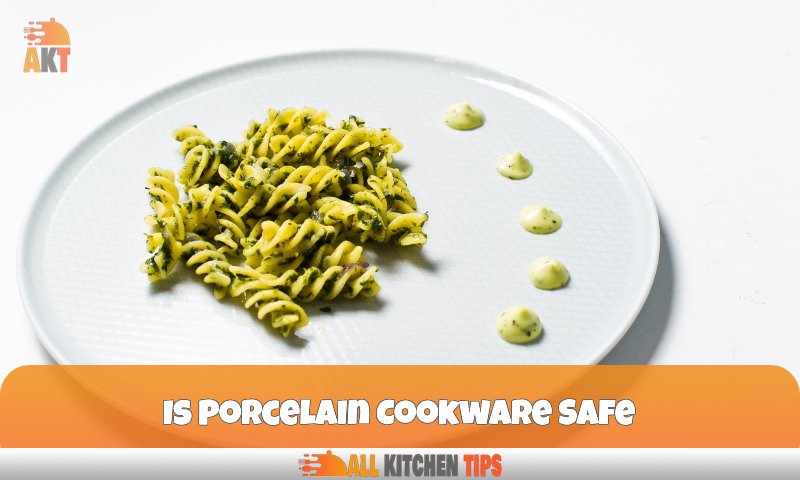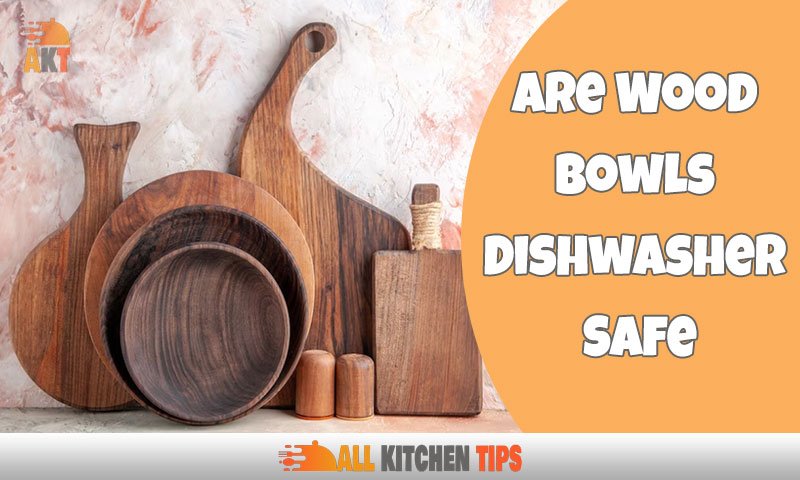Typically, a household of four needs about 16 plates and bowls for everyday use. However, the exact number of plates and bowls needed depends on various factors such as lifestyle, frequency of usage, entertaining habits, and personal preferences.
Setting up your kitchen requires some planning, and selecting the right dinnerware is an important aspect. You don’t want to run out of plates or have too many dishes lying around, occupying valuable storage space. In addition, having the right number of plates and bowls minimizes the frequency of running the dishwasher, saving you time and energy.
While the standard recommendation for a family of four is 16 pieces of dinnerware, there are other factors to consider, such as the ability to entertain guests, the frequency of washing dishes, and backups in case of breakage or damage. Ultimately, your preferred choice of plates and bowls should serve your needs, lifestyle, and preferences.
Considerations For Choosing The Right Quantity
Factors That Affect The Number Of Dishes Required
The ideal number of plates and bowls a household requires depends on several factors. Let’s take a look at some of the crucial factors that influence the number of dishes that you need to consider before making a purchase.
Different Lifestyles And Eating Habits
Different lifestyles and eating habits naturally lead to different needs for tableware. For example, if you lead a busy life and frequently eat out, you may require only a few plates and bowls. On the other hand, if you cook at home frequently, you may need more tableware, especially if you don’t want to do the dishes immediately after every meal.
Family Size And Composition
The size and composition of your family are critical factors to consider when purchasing plates and bowls. A family of four, for instance, may need more dishware than a family of two. In addition, if you have children, you may need break-resistant or non-toxic plates and bowls.
Occasions And Frequency Of Hosting Guests
Do you enjoy hosting guests frequently? If yes, you may need to purchase more plates and bowls. In such cases, it’s advisable to have an additional set or two of tableware available in case of unexpected guests or when the dishwasher is full.
Storage Space Availability
When purchasing dishes, it’s vital to consider the storage space you have available. If you have limited storage space, you may need to get creative with your storage solutions or minimize the number of plates and bowls you purchase.
How These Factors Impact The Ideal Quantity Of Plates And Bowls
All these factors contribute to how you should evaluate and determine the right quantity of plates and bowls to purchase. For example, if you have a small family, you may require only a few pieces of tableware. However, if you host guests frequently, have children, and love to cook, you may need more dishes.
Why Accommodating Such Factors Is Critical For Selecting The Perfect Quantity
Accommodating these factors is critical because it helps you avoid purchasing too many or too few plates and bowls. You don’t want to be stuck without enough tableware when you have guests over, but you also don’t want to clutter your storage space with excess dishes.
By considering your lifestyle, family size, hosting frequency, and storage space availability, you can choose the perfect amount of plates and bowls to suit your needs.
Remember, the right amount of plates and bowls also ensures that you have an easier time coordinating the table settings, and also helps you save money in the long run by purchasing exactly what you need.
Finding The Perfect Quantity
Plate: Bowl Ratio
Choosing the right ratio of plates to bowls can make all the difference. Consider the following factors:
- Different types of meals require different types of plates and bowls. While cereal can fit in a bowl, a steak may require a larger plate.
- The size and shape of plates and bowls also play a significant role in determining the ratio. Bowls generally take up more space in the cupboard because of their shape.
- Your lifestyle, family size, and occasions are all essential factors that can influence the number of plates and bowls you need.
Explanation Of Plate To Bowl Ratios
It’s essential to understand the science behind the ratio before choosing the perfect quantity of plates and bowls. Generally, the ideal plate: bowl ratio is 2:1. So, for every two plates, you should have one bowl. The reason behind this ratio is that plates usually tend to be larger than bowls and can accommodate various serving sizes.
Recommended Ratios For Different Lifestyles, Family Sizes, And Occasions
There is no one-size-fits-all ratio that works for everyone. However, here are a few recommendations:
- Single person living alone: 2-4 plates and 1-2 bowls
- Couples without children: 4-6 plates and 2-4 bowls
- Small family with one to two kids: 6-8 plates and 4-6 bowls
- Large family with three to five kids: 10-12 plates and 8-10 bowls
If you frequently entertain guests, you may require more plates and bowls, but determine your estimated need based on the anticipated number of visitors at any given time.
Calculation Methods To Determine The Perfect Quantity
Calculating the ideal number of plates and bowls may seem like a daunting task, but it’s not rocket science. Here are the most common calculation methods:
- Kitchen space calculation – check the amount of space you have in your cupboard and buy accordingly.
- Meal count calculation – estimate the average number of times meals are served, and buy 1.5 times more plates and bowls than the number of meals you make.
- The 2: 1 ratio method – as mentioned before, for every two plates, you need one bowl.
Examples Of The Formulae And Ratios For Different Scenarios
For instance, a couple without kids who usually eat out more than at home and have adequate kitchen space can purchase the following:
- Four dinner plates.
- Two side plates.
- Two soup bowls.
On the other hand, a large family with five kids and limited storage space who eats most of their meals at home should consider the following:
- Twelve dinner plates.
- Six side plates.
- Ten bowls.
Tips To Decide Which Formula To Use
Choosing your formula to determine the perfect quantity of plates and bowls mostly depends on your lifestyle. Here are a few tips to help you decide the right formula to use:
- Determine the size of your family or how many people you will regularly entertain.
- Identify the available space in your cupboard or storage area.
- Consider how frequently you will use plates and bowls.
- Finally, keep in mind the types of meals that you usually prepare and serve.
Examples To Illustrate How To Calculate The Perfect Quantity Of Dishes For Your Family
Example 1:
John and Jane are newly married and live in a one-bedroom apartment. They have a small kitchen with limited storage space. They also enjoy eating out, so they usually prepare breakfast at home, and occasionally dinner.
After considering the space and their lifestyle, they decide to purchase:
- Two dinner plates.
- Two side plates.
- One soup bowl.
Example 2:
The Smiths have four children and frequently host dinner parties at home. They love preparing meals and often entertain guests. They have a spacious kitchen with plenty of storage space.
Considering their family size and lifestyle, they decide to buy:
- Ten dinner plates.
- Six side plates.
- Eight soup bowls.
Figuring out the perfect quantity of plates and bowls for your household depends on various factors, such as your family size, lifestyle, available storage space, and the types of meals you serve. Use the above tips and methods as a guide to determining the right ratio for you.
Prioritizing Materials And Quality Over Quantity
When it comes to purchasing plates and bowls, it’s easy to fall into the trap of buying in bulk. However, prioritizing materials and quality over quantity is key to ensuring that your dishes last longer and look better on your table.
Let’s dive into material choices and quality considerations.
Material Choices
Glass
-glass plates and bowls are highly versatile and can easily work with any kitchen style or color scheme.
-can be manufactured in a variety of patterns and designs
-not microwave or oven safe
-can break easily
Porcelain
-porcelain dishes are made of fine clay and baked at high temperatures, making them highly durable.
-stain-resistant and dishwasher safe
-can be found in a variety of designs and colors
-can scratch easily if sharp utensils are used
Stainless Steel
-stainless steel plates and bowls are highly durable and won’t break like glass or porcelain.
-microwave and dishwasher safe
-can be lightweight and stackable, making them easy to store
-can dent easily if dropped or hit against a hard surface
Earthenware
-earthenware plates and bowls are made of clay and are known for their rustic, natural appearance.
-often microwave and dishwasher safe
-can be found in unique designs and colors
-more prone to chipping and scratching than porcelain or glass dishes
Quality Considerations
Factors Affecting Quality Of Dishes
-the thickness and weight of the materials used
-the glaze or coating applied to the dishes
-the precision in the manufacturing process
Importance Of Investing In Good Quality Dishes
-investing in high-quality dishes will save you money in the long run by avoiding constant replacements.
-quality dishes provide a more pleasant eating experience and can improve the overall look of your table.
-durable and well-made dishes can even be passed down as heirlooms.
Affordable Ways To Get Quality Dishes
-shop during sales or purchase sets rather than individual pieces.
-consider shopping at second-hand stores or online marketplaces for vintage or high-quality used dishes.
-look for discount stores or websites that offer quality dishes at lower prices.
Remember, prioritizing materials and quality over quantity can make all the difference in your dining experience. By investing in high-quality dishes, you’ll have a more visually appealing table and a more enjoyable eating experience.
Proper Maintenance Of Dishes For Longevity
Your dishes can last for years, but only if they’re properly maintained. Proper maintenance includes cleaning, storage, and lengthening the shelf life. In this section, we’ll discuss methods for cleaning dishes, strategies for storing them, and how to lengthen their shelf life.
Cleaning Methods
Cleaning dishes may seem straightforward, but there are techniques to ensure they’re clean and safe to use.
- Wash dishes in hot water: Always wash dishes in hot water to avoid contaminating them with bacteria.
- Use the right soap: Use a dishwashing soap that was specifically made for dishwashing, as other cleaning products may damage or scratch the dishes.
- Rinse in clean water: Rinse dishes in clean water to ensure there’s no soap residue left on them.
- Air dry dishes: Allow dishes to air dry instead of using a cloth. Drying with a cloth can transfer bacteria and germs from the cloth to the dish.
Best Techniques For Cleaning Dishes
Some techniques should be followed to make your task of cleaning dishes easy and safe.
- Soak them first: When dishes have hard-to-remove residue and food particles, let them soak for an hour or two in soap and water to help soften any dried-on food remains.
- Clean regularly: To prevent food particles from drying on, wash dishes as soon after using them as possible.
- Use a non-abrasive sponge: Select a non-abrasive sponge or scrubber to avoid creating scratches on the dishes.
Products That Can Clean Dishes Around Home
Some products can be used for dish cleaning that you can easily find at home.
- Baking soda: Baking soda is an excellent alternative to dish soap. It is gentle on dishes and effectively removes any remaining food particles.
- Lemon juice: Lemon juice has natural solvents that can cut through oils and grease.
- Vinegar: When combined with baking soda, vinegar is an effective cleaner for dishes.
Storage
Storage is crucial to ensuring your dishes remain in good condition for as long as possible.
Strategies For Storing Dishes
Consider the following strategies when determining where and how to store your dishes:
- Store dishes in a cool and dry place. Basements or attics are not suitable for dish storage.
- Keep dishes away from direct sunlight to prevent fading, discoloration, or even cracking.
- Ensure that the packing material never comes into contact with the dishes.
How To Protect Dishes During Storage
Protect your dishes using the following techniques:
- Use dish separators: Protect dishware by storing it in dish separators or individual compartments.
- Keep heavy items separate: Do not store heavy items on top of china because it can cause chips and cracks.
- Do not overcrowd: Keep the dishes loosely packed to avoid breakage.
Tips To Avoid Damage Or Loss Of Dishes
Prevent damage to or loss of dishes by following these tips:
- Do not stack plates improperly: Store them vertically if possible, or use separators when stacking them.
- Do not use abrasive sponges when cleaning dishes: Select a non-abrasive sponge or scrubber to avoid creating scratches on the dishes.
- Be gentle when handling dishes: Avoid banging plates together and pick them up from the bottom; it is safer than picking them up by their rim, which can be fragile.
Lengthening The Shelf Life
What causes dishes to deteriorate? Dishes can deteriorate due to environmental factors and improper use.
Methods To Preserve Dishware From Damage
Here are several useful techniques for preserving your dishware from damage:
- Use dish separators when storing dishware.
- Do not stack plates too high: Stacking more than five plates high increases the risk of breakage.
- Avoid using a dishwasher, as it can damage dishware.
By following these methods and techniques to clean, store, and preserve dishes, you can enjoy their beauty and functionality for years.
FAQs
How Many Plates And Bowls Do I Need For a Family of Four?
For a family of four, it’s recommended to have at least 16 plates and 16 bowls to ensure there’s enough for each meal without needing to constantly wash dishes.
What’s The Difference Between Dinner Plates And Salad Plates?
Dinner plates are larger and typically used for main courses, while salad plates are smaller and used for salads or appetizers.
Do I Need Special Plates For Formal Occasions?
Yes, it’s recommended to have a separate set of nicer dishes for formal occasions. This can include fancy plates, bowls, and even serving platters.
How Many Plates And Bowls Do I Need For a Party?
When hosting a party, it’s best to have at least double the amount of plates and bowls as the number of guests, to ensure there are always enough clean dishes available.
Conclusion
As we conclude this blog post, we hope that we have provided the necessary information for you to determine how many plates and bowls you need for your household. Remember, it all depends on your lifestyle and daily routine. You should consider the number of people in your household, the frequency of your meals, and your storage capacity when making a decision.
By having the right amount of plates and bowls, you can create less stress and more efficiency in your home. It is important to keep in mind that having too many dishes can lead to clutter and wasted space, while not having enough can lead to inconvenience and frustration.
We hope that this guide has given you ideas and helped you make an informed decision. Thank you for reading, and happy dish shopping!




